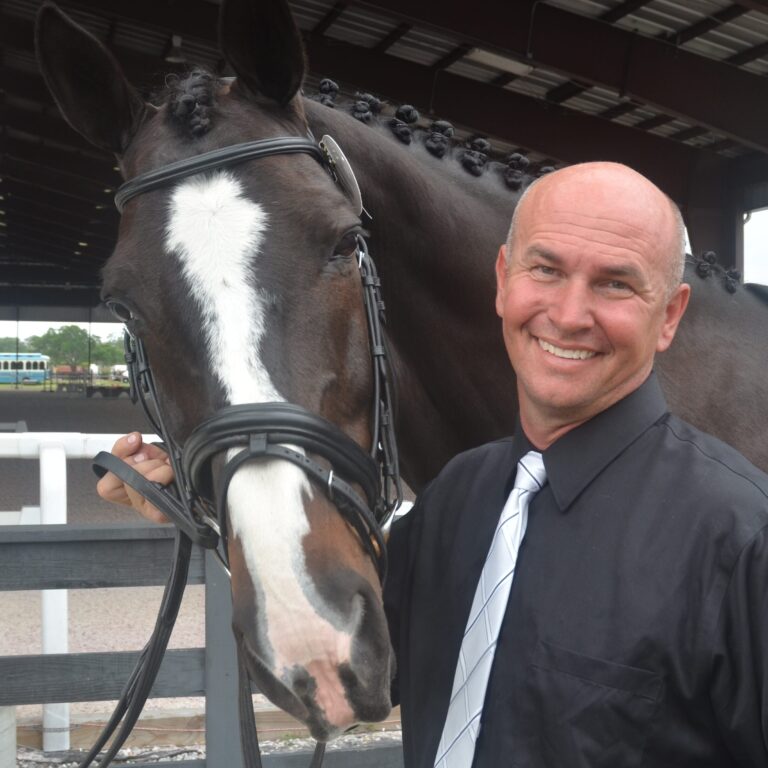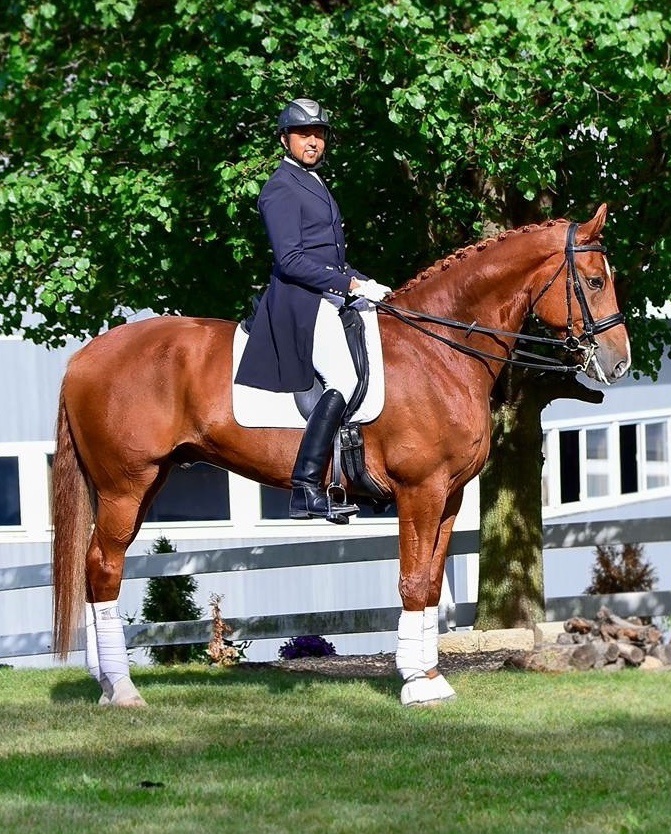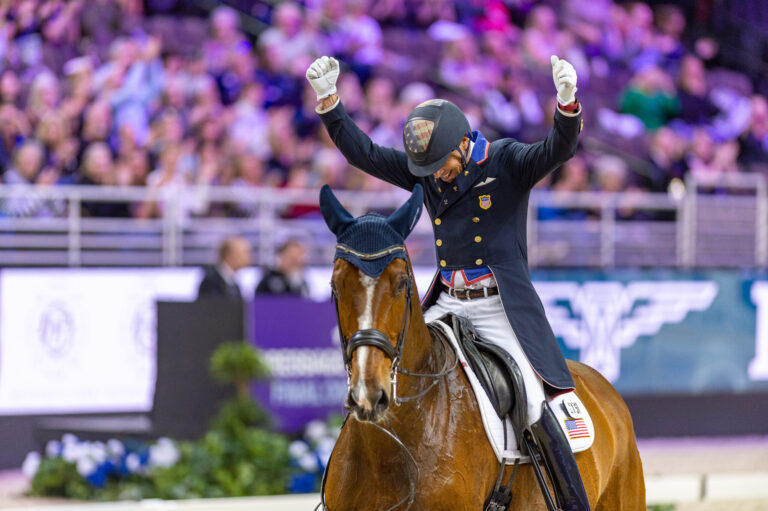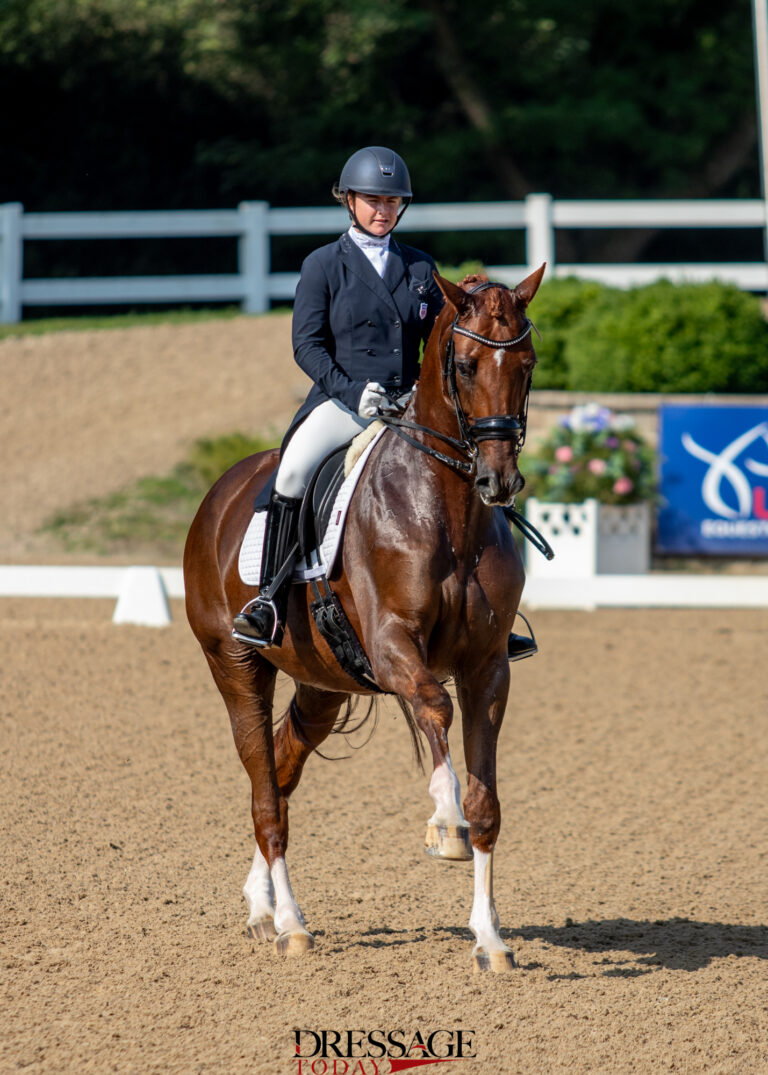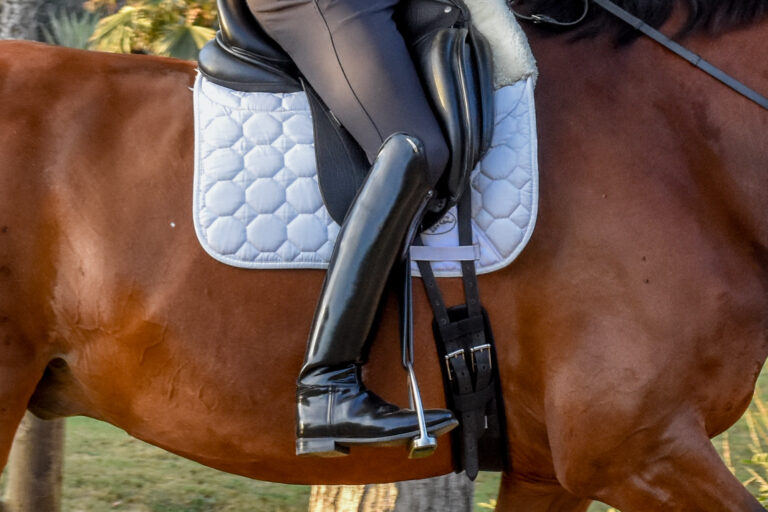Nestled in the hills of Old Mill Creek, Illinois, stands a beautiful old barn trimmed in deep spruce green, home to the country’s most notable “dancing horses.” A living history museum, the marble-white stallions with Roman noses and big, intelligent eyes look as though they have stepped out of a Baroque painting. This year marks the 60th anniversary of Tempel Farms and the introduction of these majestic Lipizzan horses to the United States.
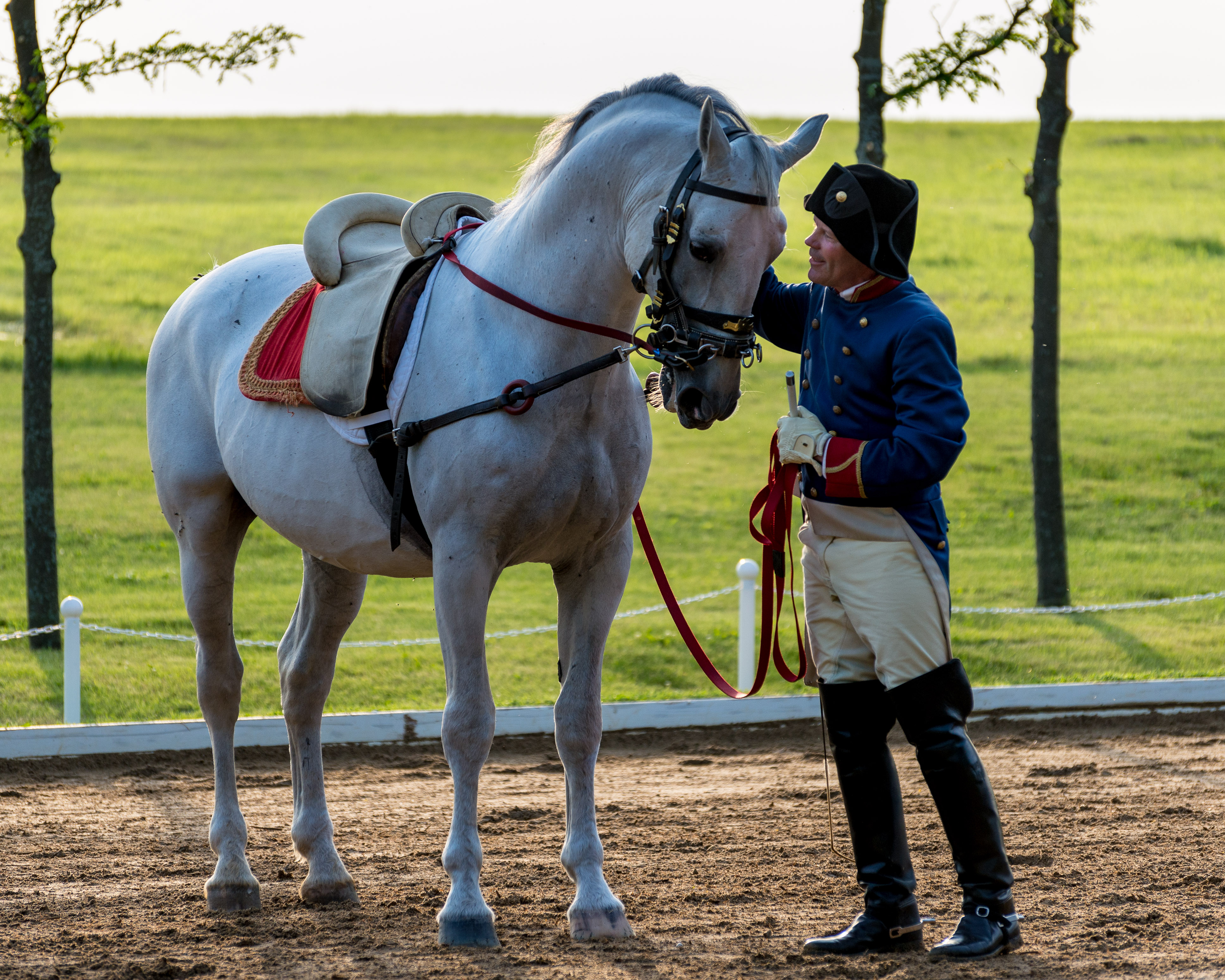
From Past to Present
Founders Tempel Smith and his wife, Esther, first fell in love with the Lipizzan horse in the early 1950s when visiting the Spanish Riding School in Vienna, Austria. Intelligent, responsive, athletic and powerful yet still beautiful to watch, the horses were historically used for riding in battle. The physical demand of dressage conditioned the horses to use their bodies effectively, achieving the rider’s goals while maintaining the longevity of the horse.
Tempel was impressed with the nobility of the Spanish Lipizzans and made the instrumental decision to import a fraction of this herd to his home in Illinois. Over the next decade, with the help of many professional breeders, veterinarians and riders, the Smiths grew their herd, maintaining the highest quality of breeding and riding. During this time, they also began to put on performances for private events or special occasions for audiences, drawing the public eye to the virtually unheard of sport of dressage. Formed during its inception, the mission of the Tempel Lipizzans is still relevant today: to promote classical dressage and the Lipizzan breed in the United States through a careful breeding and training program.
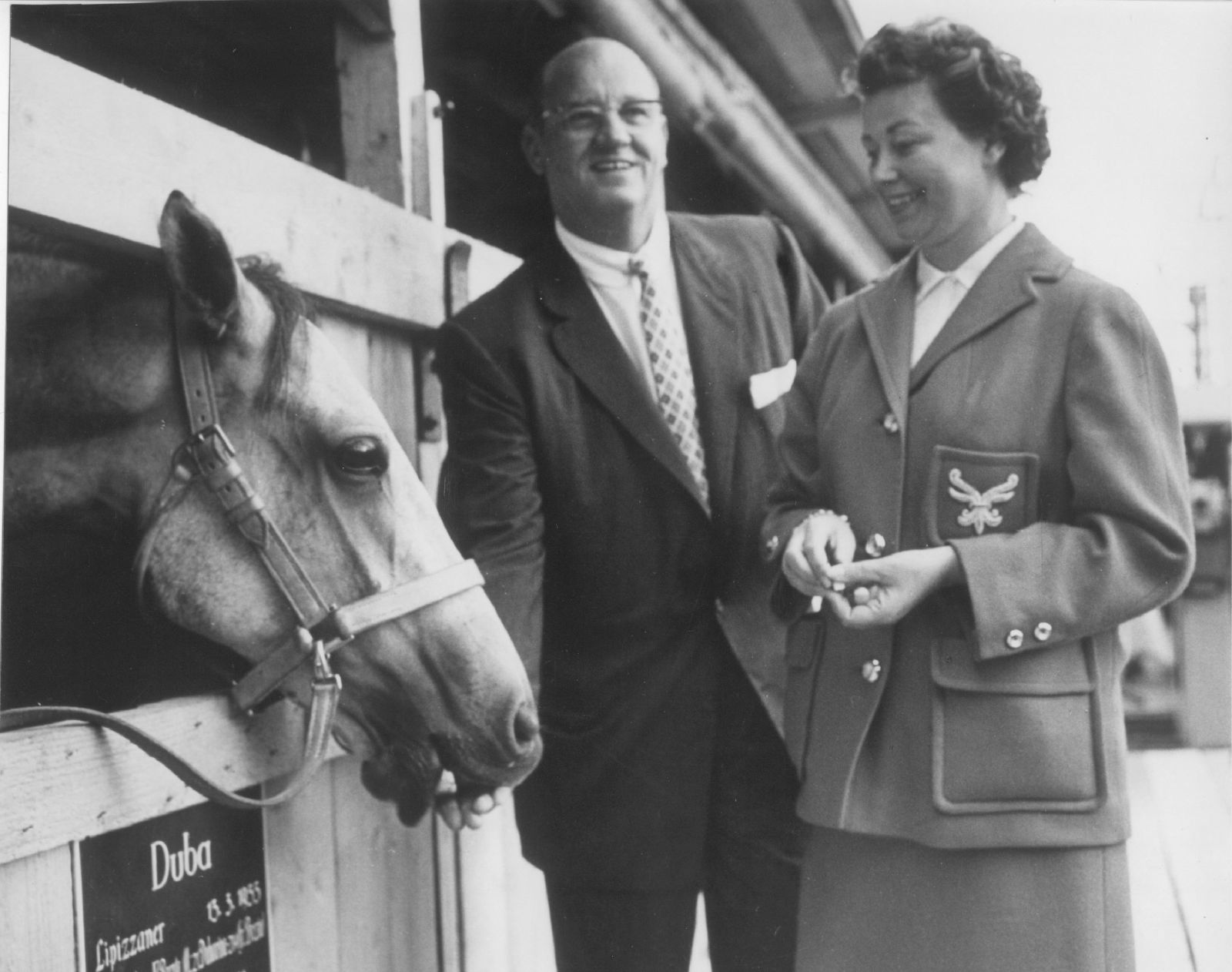
Today, this program is internationally recognized, famously representing splendid horses that meet the highest of the Lipizzan breeding standards.
To maintain these high standards, Tempel seeks to collaborate with the experts of the breed and introduce outside bloodlines into the stock to keep lines healthy. For example, importing three pregnant mares from Piber, Austria, two years ago strengthened these bloodlines and refreshed the program. Even today, one can find horses with all six sire lines that date back to the original stallions that founded the Lipizzan breed: Conversano, Siglavy, Neapolitano, Pluto, Favory and Maestoso. It is due to the characteristics of these six horses that Lipizzans are one of the best-suited breeds for dressage with a strong neck, low withers, broad chest and short back.
One of Tempel’s continual challenges in forming a classical dressage riding team in the United States is the diverse training backgrounds of the riders, varying from modern competitive to European classical to the German training system. To streamline and connect theory to practice, Tempel has relied on the wisdom of master coaches Arthur Kottas-Heldenburg and Conrad Schumacher, who have proven to be essential in navigating the intricacies of classical riding within the team. With help from the master coaches, motivated riders have found success competing their Lipizzans while further promoting the Lipizzan breed and classical riding.
Tempel has supported its riders in this endeavor to a prestigious level. Just two years ago, Jessica Starck and her mount, Maestoso Alfaya II, earned the National Champion title in the First Level Musical Freestyle.
Giving more exposure to the Lipizzans has proven to not only meet the standards of their mission but also provide perspective from an outside eye through the judges. However, when planning competitions, the riders must also work around Tempel’s busy summer performance schedule.
Sharing the Magic Of Dressage
Tempel is up to the challenge of explaining dressage to non-equestrian folks, history buffs and local riders alike. This is not an easy task. When dressage riding is harmonious, it looks like very little is being done. “Bringing this to the American public can be challenging,” Ted Goad, lead trainer for Tempel, mentions, “as classical riding is not as much a part of our history or traditions as you would find in Europe.” Though if any barn can cater to the American public, it’s Tempel.
By using horses at different levels of training and age in performances, the basics of dressage are shown, emphasizing the link to the history of the discipline as well as demonstrating their longevity. Each summer, Tempel Farms hosts many performances and opens its doors for tours. Visitors can look forward to discussing their questions with trainers and meeting several of the stallions.
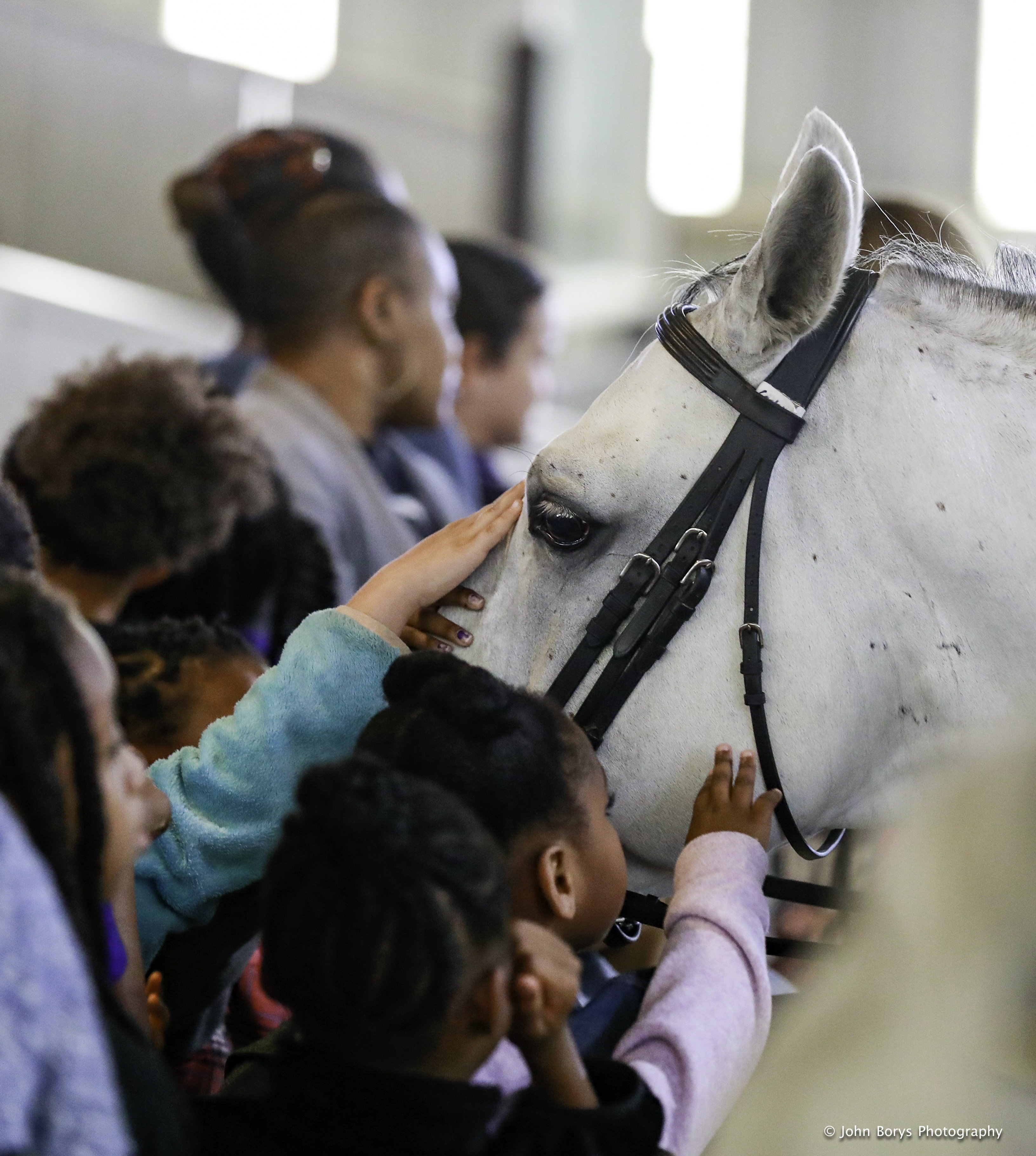
Life at Tempel Farms
Not only does Tempel train the horses on site, but they are also born and later perform at the farm. The training of the horses starts at Day One: Foals are handled daily and learn the everyday routines. Once the young are weaned (at around 6 to 8 months of age), they spend three years maturing without any intensive training. During that time, they are still handled daily and learn to be led, groomed, have their feet trimmed and build other general ground manners, though most of their time is spent out in the fields playing with their “classmates.”
Once they reach 3 ½ years of age, colts and fillies are brought to the performance facilities to begin their formal training. Knowing the horses personally gives the trainers a significant advantage when starting them, as they are familiar with every aspect of the horse’s life up to this point.
The horses at Tempel aren’t the only ones receiving an education. As Goad points out, “While Tempel Farms does do dressage, we are more of a classical riding school, which starts at the working-student level and progresses all the way up through the trainer positions. While the emphasis of the program is on classical training, we go beyond the training and teach a whole scope of horse care and management as well.”
Being a part of the Tempel Lipizzan team isn’t just about riding; students learn to work as a team for the benefit of the barn. The team atmosphere at Tempel Farms is strong: “Generally, in competition barns the team consists of horse, rider and coach. In our barn, our team consists of teams of riders, horses and coaches all working together for a common goal.” Tempel proves that working together is the best way to run a successful business, especially one with the country’s most prestigious dressage athletes in its stalls.
At any given time, there are roughly 35 Lipizzans in full training at Tempel. Their level of training ranges from green as grass to Grand Prix. Trainers and riders work with the horses at a variety of levels each day. In this way, the Tempel stables run very much like any other dressage training facility: Working students and a groom prepare horses for the trainers, students take lessons and horses advance through the levels. The most significant difference is the team aspect of the program in that horses and riders perform in a group.
Generally speaking, competitive dressage is an individual sport; very few combinations perform in pairs or quadrilles at the competitive level. Since the focus of Tempel’s program is the group performances, all trainers and riders must have a common goal and be able to reach that goal as a unit. All stallions must learn to perform together, which is no easy feat. It requires years of correct handling to prepare their minds for work in such close quarters with others.
Two days each week are spent in morning training sessions, working the horses in-hand and toward—for those who have the talent for it—the airs above the ground, also known as the haute école. This time is also used to train the assistant trainers, riders and working students in the art of the haute école. Experienced trainers show them how to guide a horse through each movement, which is a skill that takes years of dedication to master. Working closely with Oberbereiters (Chief Riders) Hans Riegler, Andreas Hausberger and Arthur Kottas-Heldenburg from the Spanish Riding School, trainers have high expectations and teach their students the way of Tempel. This is the only training facility in the United States where they can learn this art at such a respectable level.
Olympian Lendon Gray, who visits the farm annually, said she is always very impressed with the quality of riding at Tempel. “From my experience teaching at Tempel, all of the horses are very well trained, the riders are very tactful and precise in their riding,” she said. “I was extremely impressed with the overall impression of the pairs.”
The working-student program is still an active educational program in which young people can live at Tempel Farms and learn stable management, horse care and classical riding on horses at different levels of training. It’s a great opportunity for young people with a specific interest in working in the dressage field. “Working at Tempel would give you a sense of running a business or at least more so than you might find in your average dressage barn. Managing clients, press and events, breeding and the historical aspect, as well as the barn management and training aspects, are all juggled at once.”
Today, Tempel Lipizzans is owned by Martha Smith Simpson and Linda Smith Buonanno, the daughters of Tempel and Esther Smith. They have been deeply invested in carrying on the Lipizzan tradition in the United States and continue to support this training and education program.
In recognition of this, the two received the prestigious Officer’s Cross, a Grand Decoration of Honor for Service to the Republic of Austria. This award honored their careful management of a cultural institution with close ties to Austria. Their uncompromising care of these horses and the preservation of this art will continue to take this style of riding into the future.
Modern Changes
Over the years, Tempel’s program has greatly benefitted from the addition of women riding, training, breeding and assisting with the stallions. Until recently, the classical dressage world had been dominated by men. This trend was broken in 1983 when Tempel Farms accepted June Hammond as the first female élève (working student). The Spanish Riding School has also begun to incorporate more women into its program.
Also playing a role in Tempel’s progression over recent years has been the development of a preventive-care team. Each horse’s biomechanics are carefully analyzed using photo documentation every six months, as well as systematic videotaping of horses, which provides opportunities to mark progress in training and rehabilitation. By studying the conformation, muscle development and appropriate training for all horses, Tempel’s staff knows how to meet each horse’s needs best.
Equine biomechanics, fitness and performance consultant Anna Haagensen has been instrumental in providing supervision and planning over the years, which includes best practices in conditioning through physical exercises and core-strengthening, specifically for the highly trained horses. Haagensen helps Tempel in the rehabilitation of injured horses as well. Tempel also receives help from Dr. Nicole Rombach, sporthorse-therapy specialist, and her Equicore Concepts, created to help strengthen the core of equine athletes.
Also playing an important role is AVCA-certified equine chiropractor Mike Buskhol, whose knowledge in rebalancing equine posture has greatly helped keep the Lipizzans happy and sound. While the entire Tempel team plays an important role in the success of the Lipizzans, correct riding is the most valuable element in maintaining the health of the horses.
Though the philosophy of Tempel Lipizzans has evolved over the years, the core mission has remained the same: to promote classical dressage. Over the past 60 years, the team‘s dedication to their methods of breeding, handling and training these beautiful and powerful horses has proven to be immensely successful.
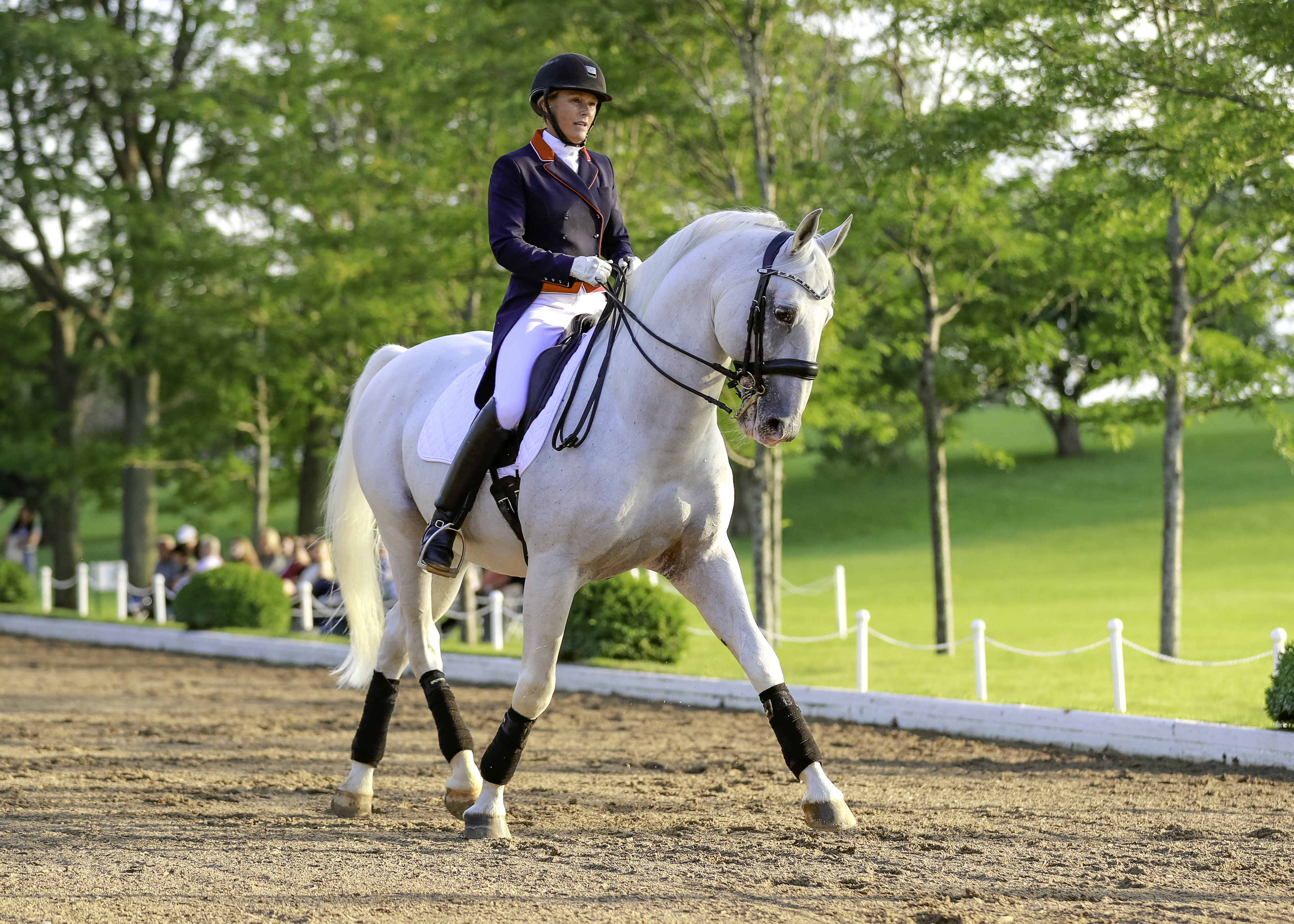
The hopes and goals for the future are many: To keep standards high for the continuation of the breed; to further the educational portion of the program with a museum dedicated to the horses, horsemanship, Tempel’s history and the history of the breed; to share an expansive collection of books; and to keep Tempel Farms as an educational landmark, where horse-people of all disciplines continue to visit to find kindred spirits with two legs or four.
Special thanks to Program Director Esther Buonanno for her assistance with this article. She currently runs the program and has served since 2012.


